Champions League: Breaking down where the quarter-final fixtures will be won and lost
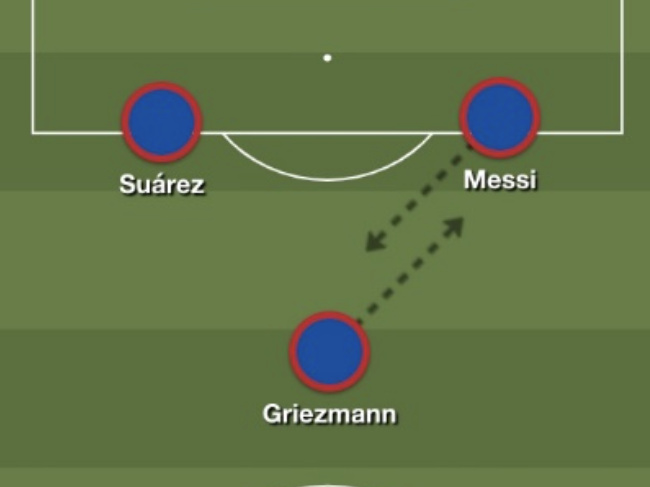
The Champions League quarter-finals get underway tonight.
Former winners Barcelona and Bayern Munich are the only ones of the eight remaining teams to have lifted the famous trophy before.
The other six have yet to do so with Pep Guardiola desperate for Manchester City to land it for the first time.
Paris Saint-Germain too are obsessed with completing the set while Atletico have come closest of all without yet going all the way.
Here’s how the four quarter-finals could be decided:
Atalanta vs PSG (Wednesday 12 August)
On paper, this contest is set to be the most exciting game tactically. Often managers use three centre-back systems to play in a defensive manner, but Atalanta’s 3-4-1-2 is one of the most exciting attacking systems in European football. This is highlighted by their wing-backs (Gosens, Hateboer and Castagne) notching 31 goals/assists between them this season.
In the PSG camp, injuries to Mbappé and Di Maria mean Tuchel must ditch the attacking 4-4-2 he lined up with in the games either side of lockdown (Dortmund second leg and Coupe de France final). In the French League Cup final, Tuchel played a 4-3-3 with Marquinhos, Gueye and Verratti instead. Verratti was brilliant but picked up an injury so will have to be replaced by one of Paredes or Herrera.
Atalanta’s build-up play often revolves around creating wide overloads with the two wing-backs, number 10 (likely to be Pasalic) and two strikers (Zapata and Papu Gomez due to Ilicic’s injury) drifting into wide zones. The two central midfielders (De Roon and Freuler) carry and pass the ball into these wide areas. Often these overloads drag opposition full-backs and centre-backs out of shape and one of Atalanta’s front eight players run into the space vacated.
The other way Atalanta capitalise on the sheer weight of numbers they flood the box with, is Duvan Zapata’s hold-up play. The Colombian is extremely powerful and often receives the ball to feet and lays it off to incoming runners.
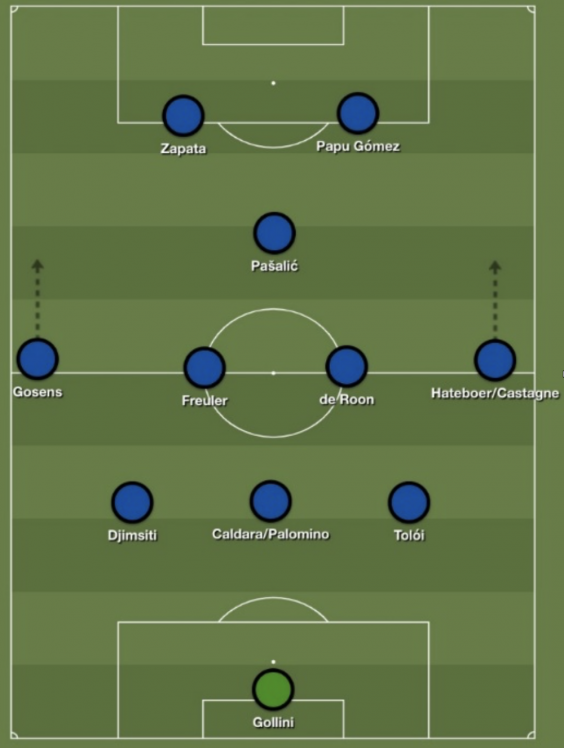
PSG’s enforced change of system with three defensive-minded midfielders may actually benefit them in terms of preventing these wide overloads, as well as tracking Atalanta’s runners behind their defence. With a natural centre-back like Marquinhos in midfield, the setup can also morph into a 3-4-3 to help cope.
A main weaknesses of Atalanta’s system is that Gasperini asks his midfield double pivot to push up really high to support the high press of their forwards. Therefore, if PSG can by-pass the press (more difficult due to the loss of Verratti), Neymar could find a lot of space drifting inside from the left, as he did in the build-up to the second goal in the Dortmund second leg.
Another aspect to mention is the amount of firepower Atalanta have in reserve. Ruslan Malinovskiyi and Luis Muriel will likely be substitutes and they have a remarkable 17 goals/assists when coming off the bench. Both offer very different threats to starters like Zapata and Papu Gómez. Malinovskiyi often dribbles inside off the right and shoots with his hammer of a left foot and Muriel uses his pace to run in-behind and linking well with Zapata’s hold-up play.
Atlético Madrid vs RB Leipzig (Thursday 13 August)
Atlético Madrid’s progression into the quarter-finals was not just significant because they knocked out the reigning European champions, but it also proved to be a significant turning point in their entire season. Atlético were unbeaten after lockdown, winning seven of their 11 La Liga games to secure Champions League qualification for the 2020/21 season.
There was also an important tactical adaptation that Simeone has carried forward from that night at Anfield. Marcos Llorente, developed in the Real Madrid youth setup as a defensive midfielder, came on to partner João Félix (then Morata) in the front two of Simeone’s preferred 4-4-2. In the subsequent games, Llorente has surprisingly shown excellent attacking instincts in the box as a second striker. Whilst also setting the defensive tone that El Cholo demands, by pressing aggressively from the front
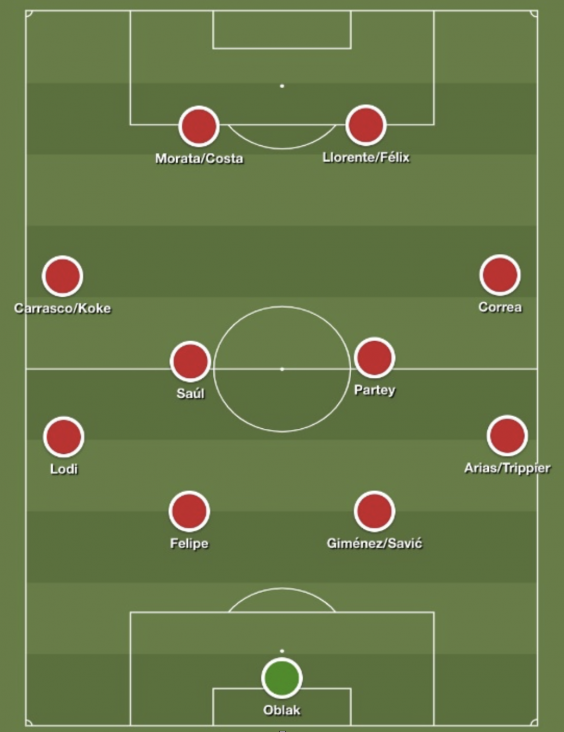
This has been just one element of a more attacking philosophy from the usually pragmatic Simeone. He’s also given the wingers more license to fly forwards. Yannick Carrasco in particular has benefitted from this, with 5 goals/assists in 473 minutes since the restart.
Pre-lockdown, Julian Nagelsmann had seemed committed to a 3-4-3 system, but upon the Bundesliga’s restart, he switched to a 4-4-2 in 6 games against teams all in the bottom half of the Bundesliga, to increase their attacking threat. However, Leipzig still conceded seven goals in those games, so expect him to return to the 3-4-3 against Atlético.
With Leipzig now unable to call on the services of new Chelsea recruit Timo Werner, it will be interesting to see how Nagelsmann fills the void. It seems likely that target man Patrick Schick (4 goals in his 6 most recent starts) and dynamic attacker Christopher Nkunku will fill two of the forward slots. The third will be between another target man Yussuf Poulsen (but this may be ill-advised given how Atlético’s centre-backs are so aerially dominant) and creative number 10 Dani Olmo. Olmo’s tendency to find space in between the lines and ability to play delicate through balls, could be Nagelsmann’s preferred option as a passage to break down Atlético’s two rigid banks of four.
The main deficiency with Leipzig’s three centre-back system is that their high line is often breached due to poor coordination between their central defenders, who often leaving gaps between each other. Therefore, the aforementioned Carrasco, Morata and/or Correa could be the key protagonists for Atlético, with their runs in-behind.
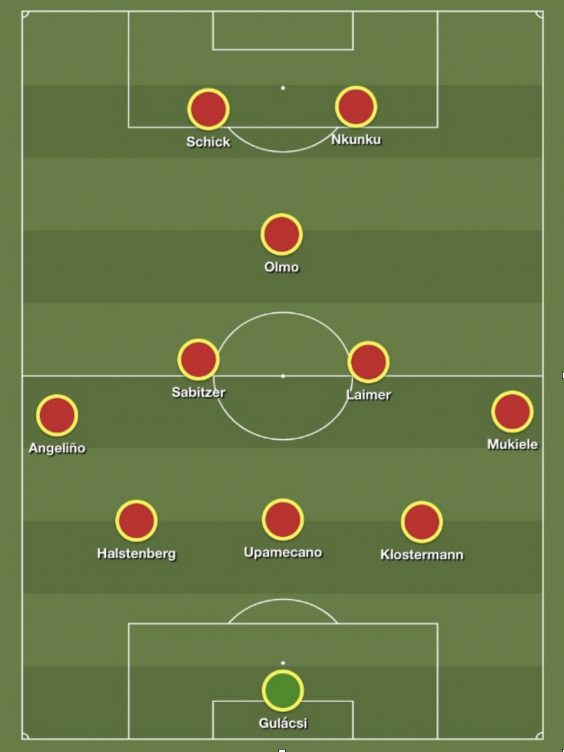
Barcelona vs Bayern Munich (Friday 14 August)
Quique Setién’s seven month reign has been characterised by tactical inconsistency and not knowing his best team. He’s alternated between playing a three-man defence, 4-3-3 and a flat 4-4-2. However, in the second leg against Napoli, he logically selected the system that had served him best of late. The 4-4-2 diamond had produced wins against Espanyol and Valladolid as well as two excellent attacking performances in the 4-1 win against fifth-placed Villarreal and 2-2 draw with Atlético.
Instead of shoehorning Griezmann onto the left wing of a 4-3-3, playing this system allows the Frenchman to occupy central areas best suited to his quality link-up play in tight spaces & intelligent movement in the box.
With this formation, Messi and Griezmann fluidly rotate as the number 10 and strike partner for Suárez. Often this has been difficult for opposition teams to control and Napoli were no different. Even for Messi’s goal, it was Griezmann who dropped deeper to link play twice, whilst Messi stayed in an advanced inside right position and scored. On other occasions, Messi acted as the number 10.
However, there are Barcelona weaknesses that Bayern will look to exploit. The intensity and, most importantly, the synchronisation of Bayern’s pressing under Hansi Flick is outstanding.
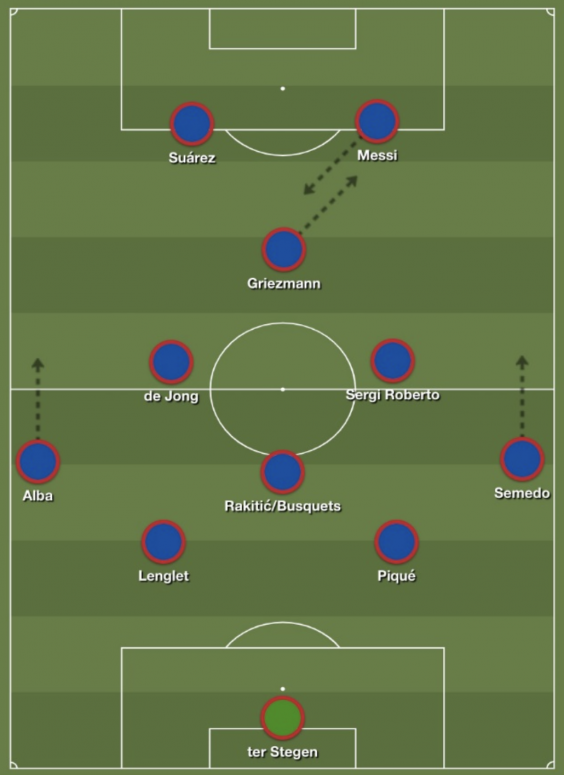
In the second half vs Napoli, Barcelona lost possession several times, particularly when subjected to pressure in midfield. Furthermore, Napoli’s goal in the first leg originated from Piotr Zielinski’s counter-pressing after a Junior Firpo loose touch. Frenkie de Jong’s ability to turn out of and dribble through pressure will be key in this regard.
Such an aggressive high press and high defensive line does sometimes leave Bayern vulnerable to runs in-behind them. However, as Chelsea learnt, the pass, run and first touch has to be perfect because the likes of Alaba and Davies have such tremendous recovery pace.
Suarez, Griezmann, Ansu Fati (possibly off the bench) and Barcelona’s full-backs, have a big role to play in exploiting this chink in Bayern’s armour.
Another area where Barcelona must improve is their defending in wide areas, particularly their right side. With Messi understandably absolved from tracking too far back, Semedo was frequently left two versus one against Mário Rui and Insigne. It should be the responsibility of the player on the right side of the diamond (Sergi Roberto vs Napoli) to cover across.
Barcelona can’t afford to be as careless against Bayern, with the explosive pace of Alphonso Davies overlapping Perisic on the left. The Canadian created a big chance in the second leg against Chelsea and assisted in the first leg.
Manchester City vs Lyon (Saturday 15 August)
Given they finished 7th in Ligue 1, Lyon’s win over Serie A champions Juventus was perhaps the biggest shock of the last 16 ties. In the first leg all the way back in the February, Rudi Garcia completely changed tactics from Lyon’s standard 4-3-3 to a 5–3-2, to help fix a defence that was conceding too many goals against better opposition – having conceded 13 goals in 8 games against France’s top five teams during his tenure, as well as 7 goals in 4 Champions League games. Since, they kept a clean sheet in the first leg, a clean sheet in the French League Cup final vs PSG and conceded very few chances at the Juventus stadium (despite the harsh penalty for handball and Ronaldo’s long-range goal).
Often Lyon’s three centre-backs are joined in a deep defensive line by the wing-backs to form a flat back five that becomes very tough to penetrate. In front of this Lyon are also protected by a narrow but very energetic midfield three of Caqueret, Guimarães and Aouar. Consequently, Lyon become very tough to penetrate through the middle of the pitch, happily surrendering space out wide.
Therefore, Cancelo/Mendy and Walker will have key roles to play in Man City’s build-up against Lyon. Additionally, De Bruyne may find space by drifting into wider positions and crossing, such as when he assisted Jesus in the first leg at the Bernabeu.
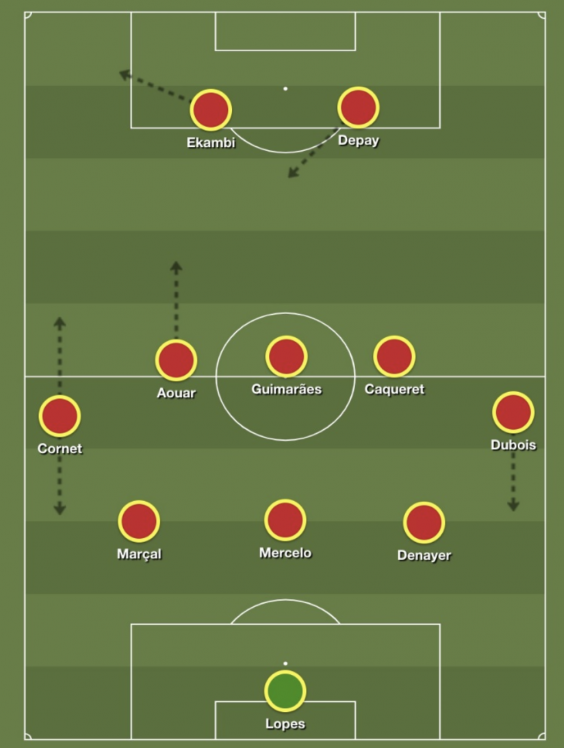
Man City’s high press was also at it’s best in the second leg against Real. Both goals came from Jesus’ intense work rate pressuring Varane into errors, first from a left wing role then as an orthodox striker in the second half.
Lyon prefer building down their left side, utilising Fernando Marçal’s (left-sided centre-back) line-breaking passes and Maxwell Cornet’s (left wing-back) pace driving down the left flank.
Therefore, Man City’s pressing on that side of the pitch will be key. They may look to funnel the ball inside Marçal to Marcelo who is much less comfortable on-the-ball, then aggressively press him with Jesus’ energy or Foden/Bernardo if they play as false nines, like they did at different points across the Real Madrid games.
With Memphis Depay linking play and creating as one of the forwards, it will be interesting to see if Garcia selects the pace of Toko Ekambi to partner him, instead of Moussa Dembele, as he did against Juventus. If so, the tussle between Ekambi and Fernandinho, down Man City’s right side, could be crucial.


